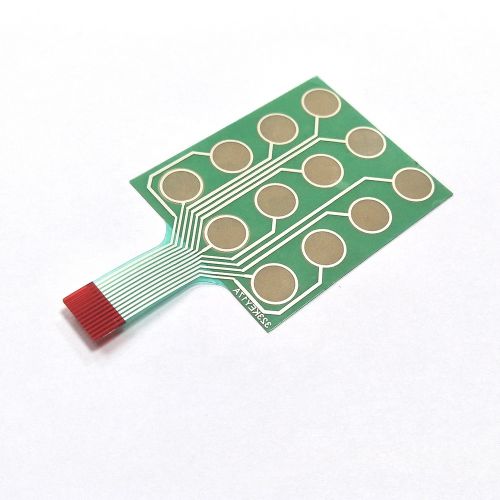Potato Chat is an instant messaging application designed and launched by the development team in China. This application provides functions such as text, voice message, video call and file sharing, and aims to provide convenient communication services for users all over the world. It has users in many countries, especially in the Asian market.This is due to 游戏加速器 Its value attribute is relatively large, and it is easy to become the backbone of the industry. https://www.vpnsum.com
Potato official website
Origin and development of Potato Chat
The background of Potato Chat
Market demand: Potato Chat was created in response to the demand for higher privacy protection and self-control by users in the market. The development team aims to provide a secure communication platform for users to exchange information in a completely private environment.
Technology-driven: Driven by the rapid development of technology, Potato Chat adopts advanced encryption technology and server architecture to ensure the security and stability of communication, thus attracting users who have high requirements for security.
Innovative idea: Potato Chat’s development team is committed to innovation, constantly introducing new functions and improving user experience, such as real-time voice and video calls, and efficient file sharing system, making it stand out in the highly competitive instant messaging market.
Global expansion of Potato Chat
Initial development: Potato Chat was first launched in China market, and soon gained the support of a large number of users. Its high privacy protection measures and user-friendly interface are the main attractions.
Internationalization strategy: With the maturity of the brand and the recognition of the market, Potato Chat began to implement the global expansion strategy, and gradually entered other Asian countries, Europe and North America markets to promote multilingual versions to meet the needs of users in different countries.
Sustained growth: Through cooperation with international operators and local market partners, Potato Chat has continuously expanded its international user base, enhanced the diversity and adaptability of its products, and responded to the changing needs and challenges of the global market.
Explore the main functions of Potato Chat
Instant messaging service of Potato Chat
Text message transmission: Potato Chat allows users to send and receive text messages, supports multiple font formats and emoticons, and makes communication more personalized and vivid. Users can have unlimited text communication in personal chat or group.
Multimedia message support: In addition to basic text messages, users can also send pictures, videos, audio files and location information. These multimedia functions enrich users’ communication methods and increase interactivity.
Message security: All messages sent through Potato Chat are end-to-end encrypted to ensure that only the sender and receiver can access the content. This security measure protects user data from external threats.
Video call and file sharing function of Potato Chat
Video call: Potato Chat provides HD video call options, and users can have one-on-one video chat or group video conference. This function is especially suitable for telecommuting and family contact, and supports simultaneous online video communication by many people.
File sharing: users can send various files directly in chat, such as documents, forms, PDF files and compressed packages. Potato Chat supports large file transfer, which is convenient for file sharing in work and study.
Efficient data synchronization: Potato Chat’s file sharing and video calling functions are equipped with efficient data synchronization technology, which can ensure the call quality and file transmission speed no matter where the user is, and improve the user experience.
Potato For window computer edition
Compare Potato Chat with other instant messaging software
Functional comparison between Potato Chat and WhatsApp
End-to-end encryption: Like WhatsApp, Potato Chat provides end-to-end encryption to protect all communication content and ensure the security and privacy of user messages. Both emphasize the protection of user data from unauthorized access.
Function integration: With WhatsApp, it mainly focuses on individual and group chat. Potato Chat provides more functions such as advanced group management and anonymous chat room, which is suitable for different users’ needs.
User interface and operation: Potato Chat’s user interface is more modern in visual design, providing more customization options, while WhatsApp’s interface is relatively simple and intuitive.
User experience differences between Potato Chat and Telegram
Message management: both Potato Chat and Telegram provide message editing and deletion functions, but Potato Chat provides more control in message management, for example, it can set the automatic destruction of messages for a longer time.
Group function: Telegram is famous for its powerful group function, which supports super groups with tens of thousands of members and a wide range of robot functions. Although Potato Chat provides similar functions, it pays more attention to providing customized group management tools to adapt to the use of enterprises and teams.
Privacy protection: Both of them provide advanced privacy settings, but Potato Chat has taken stricter measures in privacy protection, such as providing more complicated user authentication options and anonymous functions to meet the privacy legal requirements of different countries.
Potato Chat
The influence of Potato Chat in China market
User base of Potato Chat in China
Rapidly growing user base: Potato Chat has accumulated a large number of users since it was launched in China market. Thanks to its powerful functions and attention to users’ privacy, it meets the expectations of China users for instant messaging software.
Diversified user groups: Potato Chat attracts all kinds of users, including young people, business users and technology enthusiasts. Its user-friendly design and rich functional settings make it stand out in the fierce competition market.
Active communities and public platforms: Potato Chat has successfully built a number of active communities by using its platform features, which cover entertainment, education, technology and other fields, further enhancing user stickiness.
Adjustment and optimization of China’s market strategy
Localization service: In order to better serve users in China, Potato Chat has made a lot of localization adjustments, including localization of interface language, functional adjustment in line with China users’ habits, and adding special expressions and themes of local festivals.
Abide by local laws and regulations: In the face of strict Internet regulatory environment, Potato Chat strictly abides by China’s data protection laws and network security regulations, and ensures that the services provided fully meet the legal requirements.
Marketing and partnership: Potato Chat has effectively expanded its market influence by establishing cooperative relations with local enterprises and media in China. At the same time, through multi-channel marketing strategies such as social media and online advertising, brand visibility and user participation are increased.
Potato official website
Technical architecture of Potato Chat
Analysis of encryption technology used in Potato Chat
End-to-end encryption (E2ee): Potato Chat uses end-to-end encryption technology to ensure the security of messages. All sent messages are encrypted on the sender’s equipment, and can only be decrypted on the receiver’s equipment, so as to ensure that the message content cannot be read in any intermediate link. This technology ensures the absolute privacy of communication.
Encryption algorithm: Potato Chat adopts advanced encryption algorithms, such as AES-256 and RSA-2048. These algorithms are widely regarded as the most secure encryption standards at present, which can effectively prevent messages from being cracked or intercepted.
Dynamic key exchange: In order to further enhance security, Potato Chat uses dynamic key exchange mechanism. Each session generates a new encryption key, even if a key is leaked, it will not affect the communication content before or after.
Server and data processing of Potato Chat
Distributed server architecture: Potato Chat adopts distributed server architecture to improve the reliability and response speed of the system. Servers are distributed in many data centers around the world, ensuring that users can get fast and stable services in any region.
Data storage and backup: user data is stored in a highly secure data center, and multi-level backup strategies are used, including real-time backup and offline backup, to ensure data security and recoverability. In the process of data storage, all data are encrypted to prevent unauthorized access.
Efficient data processing: In order to ensure the user experience, Potato Chat implements an efficient data processing algorithm on the server side. These algorithms can quickly handle a large number of instant messaging, file transfer and video call requests, and adopt load balancing technology to ensure stable and efficient server performance.








